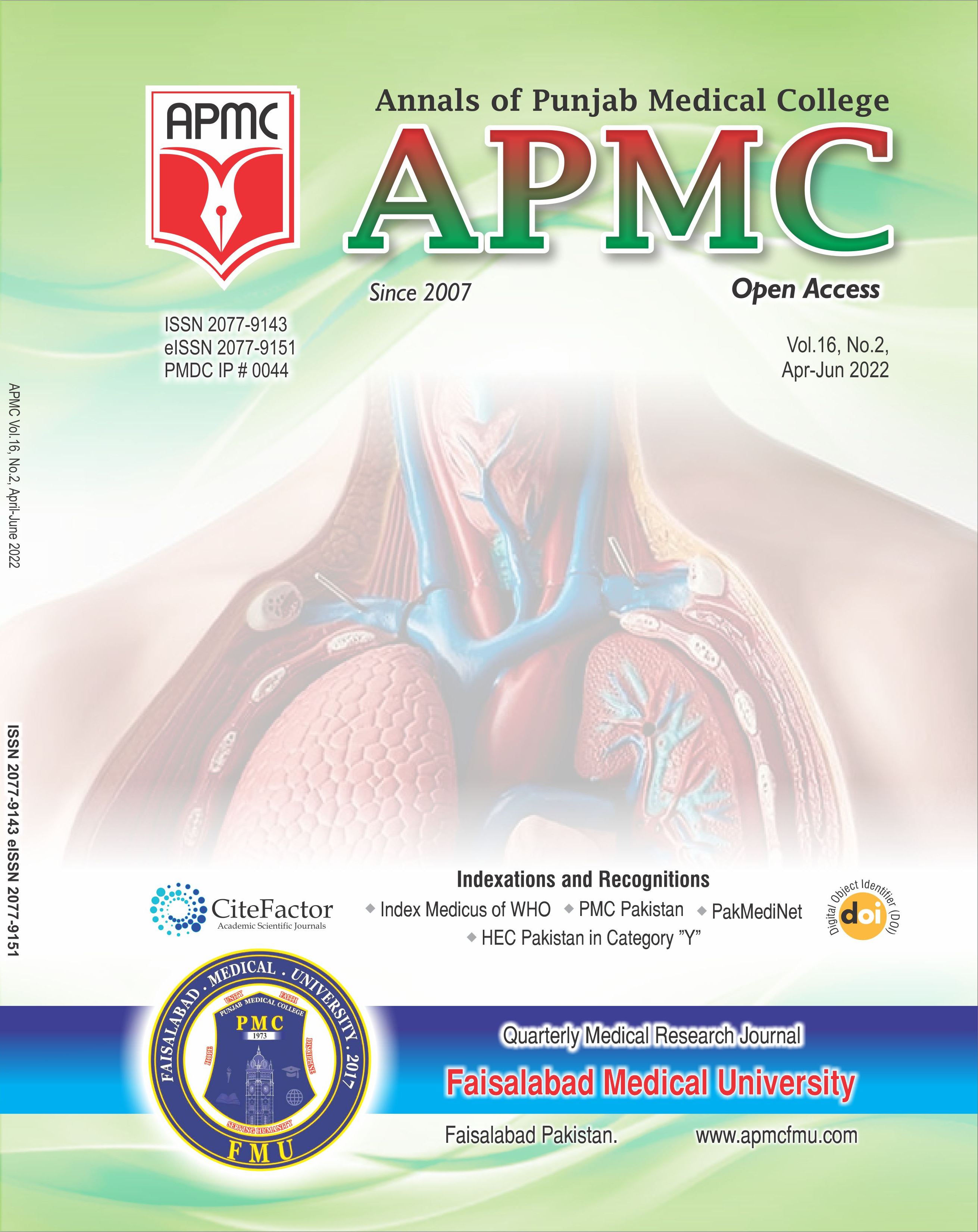Frequency of Portal Vein Tumor Thrombosis among Patients Presented with Hepatocellular Carcinoma
Abstract
Background: Hepatocellular carcinoma (HCC) is one of the most common types of carcinomas and represents a significant challenge for healthcare providers around the world. Portal vein tumor thrombus (PVTT), seems to be a common complication that continues to be a barrier in the HCC treatments, which is linked to a significant rate of recurrences and a poor prognosis. Objective: To determine the frequency of portal vein tumor thrombosis among patients presented with hepatocellular carcinoma. Study Design: Descriptive Cross-sectional Study. Settings: This study was conducted at the inpatient department of Hepato-gastroenterology, Asian Institute of Medical Sciences, Hyderabad, Pakistan. Duration: Six months, from March 2019 to September 2019. Methods: All patients who visited to AIMS; Hyderabad were included in the study. Ultrasonography and CT scan imaging, as well as screening for alpha fetoprotein levels, were done to confirm the diagnosis of hepatocellular carcinoma. Laboratory data included hemoglobin, platelet count, AST and ALT levels, serum albumin, total serum bilirubin, gamma glutamyl transpeptidase (GGT), gamma globulin, prothrombin time with an international normalized ratio (INR), and serum creatinine to assess the portal vein tumor thrombosis. All of the information that was gathered was documented by the study's proforma, and then it was analyzed with SPSS version 26. Results: The mean age of the patients was 51.4±6.8 years, and the mean BMI was 63.1±7.3 kg/m2. Out of all males were in majority (70.6%) and females were 29.4%. Portal vein tumor thrombosis was noted in 59 (42.4%) of the patients with hepatocellular carcinoma. The portal vein tumor thrombosis was statistically significant as per age, body mass index, and gender, and the p-values were quite significant (p=<0.05). Conclusion: It is to be concluded that portal vein tumor thrombosis is fairly common in HCC patients. Screening detects hepatocellular carcinoma at an earlier stage to reduce the rate of mortality.

 This work is licensed under a
This work is licensed under a 